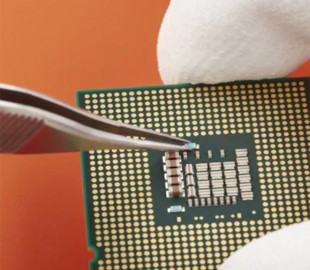
Unlike semiconductors, both sides of a gallium nitride wafer can have different functions. This was the first time it was possible to put it into practice.
The new achievement of scientists is capable of radically improving smartphones by equipping them with double-sided gallium nitride chips. The TechRadar portal writes about this research.
Researchers from Cornell University (USA) with the support of the Polish Academy of Sciences reported the creation of the world's first double-sided “dualtor” chip, which combines both photonic and electronic devices on a single gallium nitride (GaN) wafer. The technology is considered a breakthrough in semiconductor technology, as it can reduce the size, increase the energy efficiency of devices such as smartphones, and at the same time reduce the cost of production.
Traditional silicon wafers are cubic in shape, making both sides nearly identical. But the GaN plate, due to its unique crystal structure, has different properties on each side, similar to how the poles of a magnet differ. The team used the metal polar (Ga-polar) side to create light-emitting diodes (LEDs), and the nitrogen polar (N-polar) side — to create high-electron-mobility transistors (HEMTs), and made both functions work simultaneously.
200% Deposit Bonus up to €3,000 180% First Deposit Bonus up to $20,000“As far as we know, no one has made active devices on both sides, even for silicon,” — noted co-author Len van Derzen.
According to the scientists, double-sided plates can already be used to make microLED displays more affordable and energy efficient. Combining photonic and electronic functions on a single chip will make it possible to reduce the number of components, which will lead to lower production costs and smaller device sizes. Potentially, LED displays could become cheaper and more compact, and with them gadgets like smartphones.
In addition, one side can be turned into a mobile antenna so that data is transmitted directly through display. So multifunctional “dualtronics” chips can transform not only screens, but also radio frequency devices, lasers, equipment for 5G and 6G.
“A good analogy — iPhone. It is, of course, a phone, but it is also a lot of other things. It's a calculator, it allows you to go online. So there's a certain convergence aspect of it, I would say, in this article, it's a convergence of maybe two or three functions , but it's actually more,” — explained Debdeep Jena.

